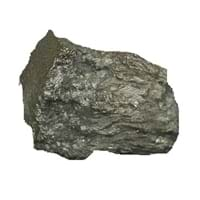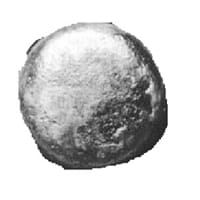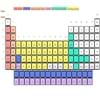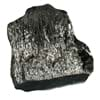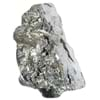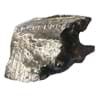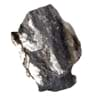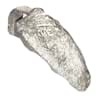Erbium vs Plutonium
Periodic Table
Symbol
Er
Pu
Group Number
Not Available
0
18
Period Number
6
7
Block
f block
f block
Element Family
Lanthanide
Actinide
CAS Number
7440520
35
7440075
99+
Space Group Name
P63/mmc
P121/m1
Space Group Number
194.00
5
11.00
13
Facts
Interesting Facts
- Erbium metal is used as alloyed with Vanadium to make it softer.
- Recent studies shows that it is helpful for metabolism.
- Plutonium metal if obtain from ores of uranium metal.
- Plutonium metal is very sensitive to the change in atmospheric conditions like temperature and pressure.
Sources
Mining
Mining, Ores of metals
History
Who Discovered
Carl Gustaf Mosander
Glenn T. Seaborg, Arthur Wahl, Joseph W. Kennedy, Edwin McMillan
Discovery
In 1842
In Between 1940 1941
Abundance
Abundance In Universe
2 * 10-7 %
22
Not Available
Abundance In Sun
~0.0000001 %
26
~-9999 %
Abundance In Meteorites
0.00 %
36
Not Available
Abundance In Earth's Crust
0.00 %
32
Not Available
Abundance In Oceans
0.00 %
36
Not Available
Uses
Uses & Benefits
- It has a tendency to get tarnished in the open air, but when alloyed with elements like erbium, vanadium, its hardness levels decreases.
- Its compounds like Erbium oxide is used in safety glasses of welders and metal workers.
- Plutonium was used in atomic bombs and still it is being used in various weapons and Ammunition industry.
- It is also used in nuclear power plant as source of energy for space missions.
Industrial Uses
Chemical Industry
Aerospace Industry, Ammunition Industry
Medical Uses
NA
NA
Other Uses
Alloys
Alloys
Biological Properties
Toxicity
Mildly Toxic
Toxic
Present in Human Body
No
No
In Blood
Not Available
0.00 Blood/mg dm-3
37
In Bone
Not Available
0.00 p.p.m.
36
Physical Properties
Melting Point
1,522.00 °C
28
639.50 °C
99+
Boiling Point
2,510.00 °C
99+
3,235.00 °C
24
Appearance
Physical State
Solid
Solid
Color
Silvery White
Silvery White
Luster
Lustrous
NA
Hardness
Brinell Hardness
814.00 MPa
11
Not Available
Vickers Hardness
589.00 MPa
19
Not Available
Speed of Sound
2,830.00 m/s
28
2,260.00 m/s
99+
Optical Properties
Allotropes
No
No
α Allotropes
Not Available
Not Available
β Allotropes
Not Available
Not Available
γ Allotropes
Not Available
Not Available
Chemical Properties
Chemical Formula
Er
Pu
Isotopes
Known Isotopes
31
8
20
19
Electronegativity
Pauling Electronegativity
1.24
36
1.28
33
Allred Rochow Electronegativity
1.11
29
1.22
26
Electropositivity
Pauling Electropositivity
2.76
18
2.72
21
Ionization Energies
1st Energy Level
589.30 kJ/mol
99+
584.70 kJ/mol
99+
2nd Energy Level
1,150.00 kJ/mol
99+
1,128.00 kJ/mol
99+
3rd Energy Level
2,194.00 kJ/mol
99+
2,084.00 kJ/mol
99+
4th Energy Level
4,120.00 kJ/mol
33
3,338.00 kJ/mol
99+
Electrochemical Equivalent
2.08 g/amp-hr
28
2.28 g/amp-hr
22
Electron Work Function
Not Available
Not Available
Other Chemical Properties
Ionization, Radioactive Isotopes, Solubility
Corrosion, Ionization, Radioactive Isotopes, Radioactivity
Atomic Properties
Atomic Number
68
99+
94
24
Electron Configuration
[Xe] 4f12 6s2
[Rn] 5f6 7s2
Crystal Structure
Hexagonal Close Packed (HCP)
Monoclinic (MON)
Crystal Lattice
HCP-Crystal-Structure-of-Erbium.jpg#100
MON-Crystal-Structure-of-Plutonium.jpg#100
Atom
Number of Protons
68
99+
94
24
Number of Neutrons
99
33
150
11
Number of Electrons
68
99+
94
24
Radius of an Atom
Atomic Radius
176.00 pm
18
159.00 pm
28
Covalent Radius
189.00 pm
19
187.00 pm
20
Van der Waals Radius
Not Available
200.00 pm
28
Atomic Weight
167.26 amu
99+
244.00 amu
19
Atomic Volume
18.40 cm3/mol
25
12.32 cm3/mol
99+
Adjacent Atomic Numbers
Valence Electron Potential
49.00 (-eV)
29
64.90 (-eV)
21
Lattice Constant
355.88 pm
39
618.30 pm
4
Lattice Angles
π/2, π/2, 2 π/3
NA
Lattice C/A Ratio
1.57
17
Not Available
Mechanical Properties
Density
Density At Room Temperature
9.07 g/cm3
99+
19.82 g/cm3
13
Density When Liquid (at m.p.)
8.86 g/cm3
23
16.63 g/cm3
8
Tensile Strength
Not Available
Not Available
Viscosity
Not Available
Not Available
Vapor Pressure
Vapor Pressure at 1000 K
0.00 (Pa)
20
0.00 (Pa)
26
Vapor Pressure at 2000 K
Not Available
2.20 (Pa)
12
Elasticity properties
Shear Modulus
28.30 GPa
25
43.00 GPa
18
Bulk Modulus
44.40 GPa
27
Not Available
Young's Modulus
69.90 GPa
29
96.00 GPa
21
Poisson Ratio
0.24
28
0.21
32
Other Mechanical Properties
Malleable
Ductile, Malleable
Magnetic Properties
Magnetic Characteristics
Specific Gravity
9.07
32
19.84
7
Magnetic Ordering
Paramagnetic
Paramagnetic
Electrical Properties
Electrical Property
Conductor
Poor Conductor
Resistivity
0.86 nΩ·m
99+
1.46 nΩ·m
99+
Electrical Conductivity
0.01 106/cm Ω
99+
0.01 106/cm Ω
99+
Electron Affinity
50.00 kJ/mol
21
Not Available
Thermal Properties
Specific Heat
0.17 J/(kg K)
34
0.13 J/(kg K)
39
Molar Heat Capacity
28.12 J/mol·K
11
35.50 J/mol·K
3
Thermal Conductivity
14.50 W/m·K
99+
6.74 W/m·K
99+
Critical Temperature
Not Available
Not Available
Thermal Expansion
12.20 µm/(m·K)
31
46.70 µm/(m·K)
6
Enthalpy
Enthalpy of Vaporization
261.00 kJ/mol
35
344.00 kJ/mol
25
Enthalpy of Fusion
17.20 kJ/mol
15
2.82 kJ/mol
99+
Enthalpy of Atomization
314.00 kJ/mol
33
360.00 kJ/mol
26
Standard Molar Entropy
73.10 J/mol.K
11
Not Available
|
||
|
||
|
